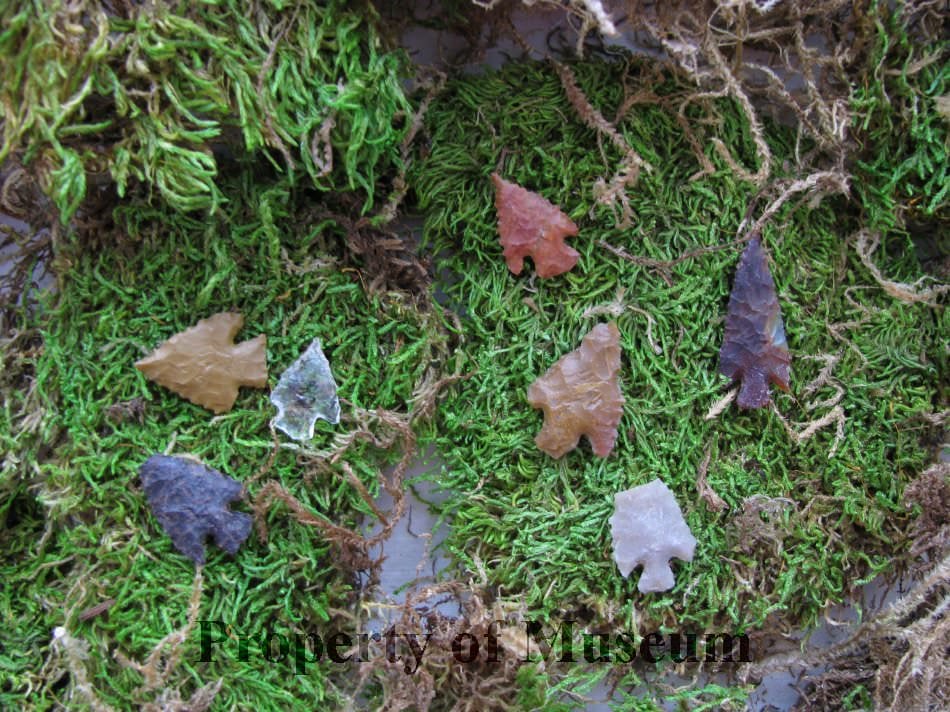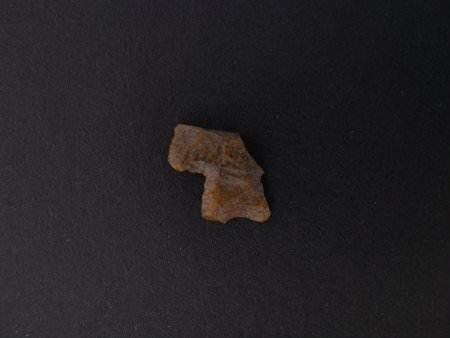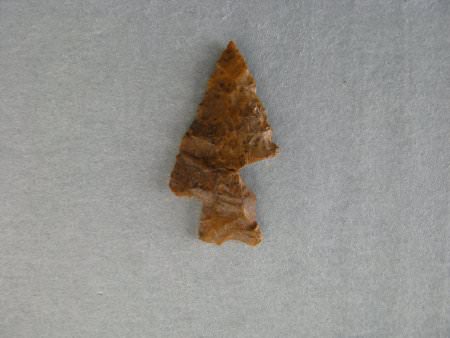The Early Ceramic (A.D.150 - A.D. 1150) and Middle Ceramic Periods (A.D. 1150 - A.D. 1540) subdivide this stage of pre-history, a time when inhabitants developed a pair of significant innovations: The manufacture and use of ceramics and introduction of the bow and arrow. Overall, Colorado's Front Range environment received a little more moisture and slightly higher average temperatures than in previous periods. People became accustomed to wider varieties of plants and animals. Still, habitats fluctuated between wet and dry cycles some lasting for centuries. During the fifteen centuries of the Late Prehistoric Stage only subtle differences appear in the cultural artifacts discovered. As the Late Archaic Period (1000 B.C. - A.D. 150) faded into the Early Ceramic life, systems continued to follow a time-tested pattern. Living along the Front Range required an instinctive intelligence common among hunter-gatherers. First and foremost, an innate ability to find water - the springs, ponds and streams so vital in a xeric environment - topped the list. They became gathering places for anything living. The region's rock outcroppings and sunny climate offered welcome havens of warmth and protection for highly mobile bands of people. For generations the Front Range inhabitants migrated seasonally along the foothills, up through passes into game rich mountain parks and down amid bison herds on the plains in a continual search for food and resources. Practices in subsistence life carried over from the Archaic Stage. Groups of hunters stalked big game animals such as bison, deer, elk, mountain sheep and pronghorn. The bison herds of North America's Central Plains became legendary in size. Early Ceramic inhabitants continued to depend on them heavily. They dried the meat into pemmican, cured the hides for clothing and shelter, made tools and weapons out of bones, utilized sinew to stitch household and clothing items, formed bladders into water containers and even made the animal a revered object in their ritualistic ceremonies. Prehistoric hunters sometimes relied on communal efforts driving animals through stone game drives or over cliffs known as bison jumps. Most of the time their skills at hunting small game and gathering plants for food meant the difference between survival and starvation. Wetlands within the South Platte Basin were welcomed and provided an abundance of waterfowl, beaver, rabbits, chokecherries, goosefoot, wild plums and grapes. On the drier hillsides and High Plains a skilled hunter-gatherer could depend on prairie dogs and birds, acorns, cacti, sunflowers and the hardy yucca plant. During wet climatic episodes a Front Range prehistoric resident's cupboard stayed full. When the resources dried up their best ally became instinct and mobility. Evidence uncovered at Early Ceramic sites along Colorado's Front Range indicates a "western movement" of cultural artifacts from the Central Plains, an extension of Eastern Woodland tradition. Larger and semi-permanent camps with more features tended to appear. The knowledge of how to make cord marked pottery traveled west with prehistoric immigrants. Eventually some limited examples of horticulture appeared. Evidence of corn appeared in the Early Ceramic levels at Colorado sites, including Bayou Gulch and the Franktown Cave. Grinding stones called manos and metates continued to be essential tools for food preparation. Inter-regional trade increased connecting the Front Range with cultures found in all directions. One of the region's most plentiful resources, petrified wood, became a stone-age calling card for this region as evidenced by the abundance of flakes, bifaces, cores and projectile points found at local sites. Sometime during the first millennium A.D., a hunting innovation made an appearance from the East and slowly replaced the traditional atlatl/dart. Projectile points evolved from large stemmed, corner or side-notched bases, to narrow necked, side and corner-notched points indicative of points used in bow and arrows. Middle Ceramic camps and life systems carried on changes introduced during the Early Ceramic Period with some interesting differences. Innovations in ceramics continued to filter in from the Central Plains such as globular pottery with flared rims and obliterated cord marks. Tributaries of the Platte and Loup Rivers in Nebraska, and the Republican, Solomon and Saline Rivers of Kansas witnessed the growth of village life and more durable architecture. Further west, however, along the leeward side of the Rockies, campsites unveiled little verification of this phenomenon. Evidence indicates that population levels may have even decreased during the Middle Ceramic Period or up until the close of the 15th century. Within a few decades a new stage awaited Front Range inhabitants. The Protohistoric Stage featured European contact and a culture-changing introduction of the horse, guns and disease. Some of Douglas County's best ancient campsites like Rueter Hess-Oeskeso, Ridgegate, Castle Rock, Bayou Gulch, Franktown and Blackfoot Cave reveal evidence of just such a camp. What once was a small window into our pre-historic past has been opened a little more by recent mitigation and planned archaeological projects. This exhibit features stone artifacts found in Douglas County that give tantalizing clues into this past: Sources: Cassells, Steve, The Archaeology of Colorado, Boulder: Johnson Printing, 1997. Gilmore, Kevin P., et. al., Colorado Prehistory: A Context for the Platte River Basin, Denver: Colorado Council of Professional Archaeologists, 1999. West, Elliot. Contested Plains: Indians, Goldseekers, and the Rush to Colorado. Lawrence, Kansas: University of Kansas Press, 1998.


